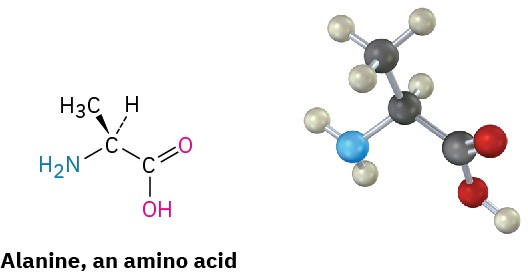26 Why This Chapter?

Figure 26.1 The building blocks of life that we call proteins are aptly named after Proteus, the early Greek sea-god whose name means “first” or “primordial.” (credit: modification of work by Coyau/Wikimedia Commons, CC BY-SA 3.0)
Continuing our look at the main classes of biomolecules, we’ll focus in this chapter on amino acids, the fundamental building blocks from which up to 150,000 or so different proteins in our bodies are made. We’ll then see how amino acids are incorporated into proteins and examine the structures of those proteins. Any understanding of biological chemistry would be impossible without this knowledge.
Proteins occur in every living organism, are of many different types, and have many different biological functions. The keratin of skin and fingernails, the fibroin of silk and spider webs, and the estimated 50,000 or so enzymes that catalyze the biological reactions in our bodies are all proteins. Regardless of their function, all proteins have a fundamentally similar structure and are made up of many amino acids linked together in a long chain.
Amino acids, as their name implies, are difunctional. They contain both a basic amino group and an acidic carboxyl group.

Their value as building blocks to make proteins stems from the fact that amino acids can join together into long chains by forming amide bonds between the –NH2 of one amino acid and the –CO2H of another. For classification purposes, chains with fewer than 50 amino acids are often called peptides, while the term protein is generally used for larger chains.


